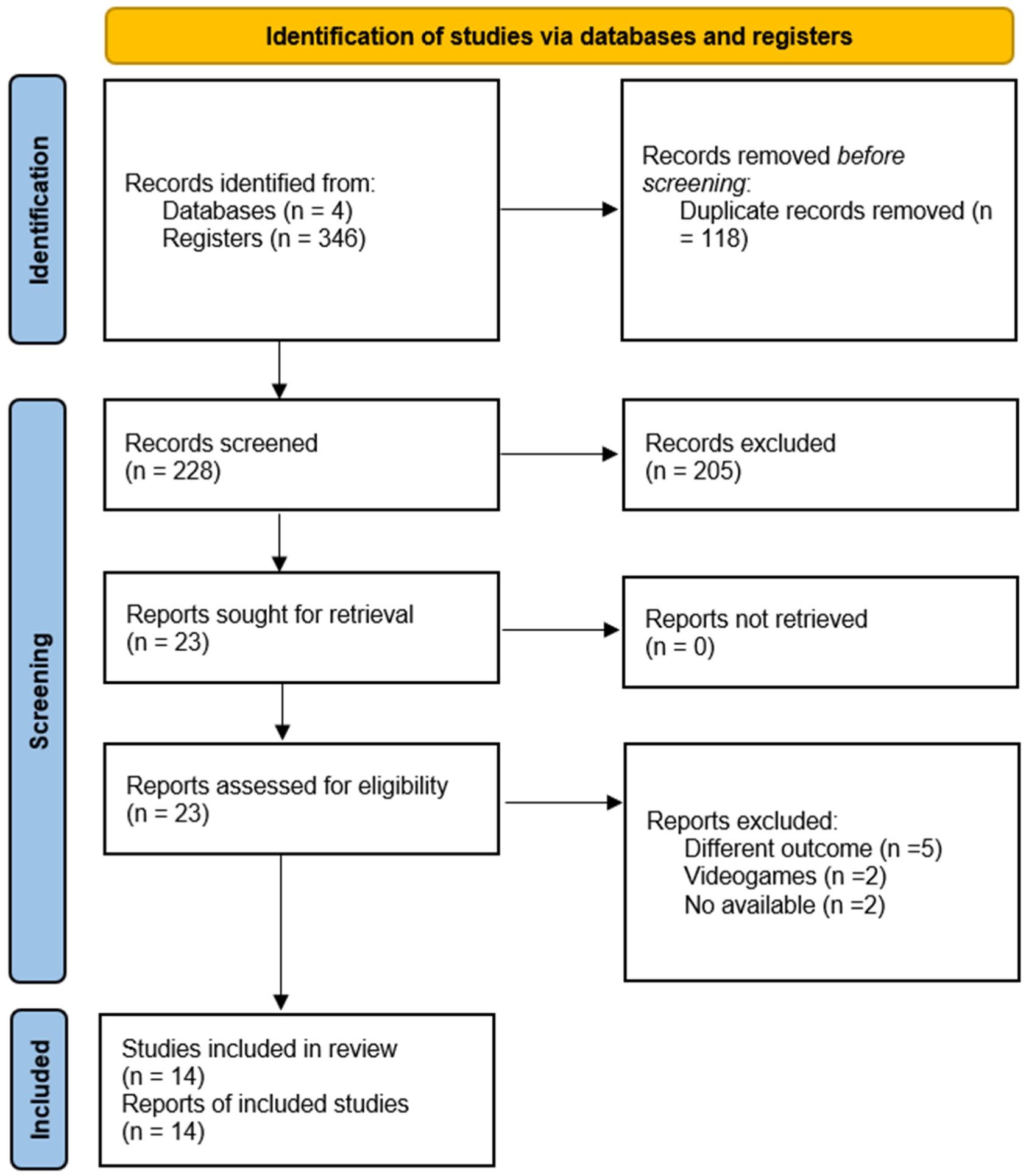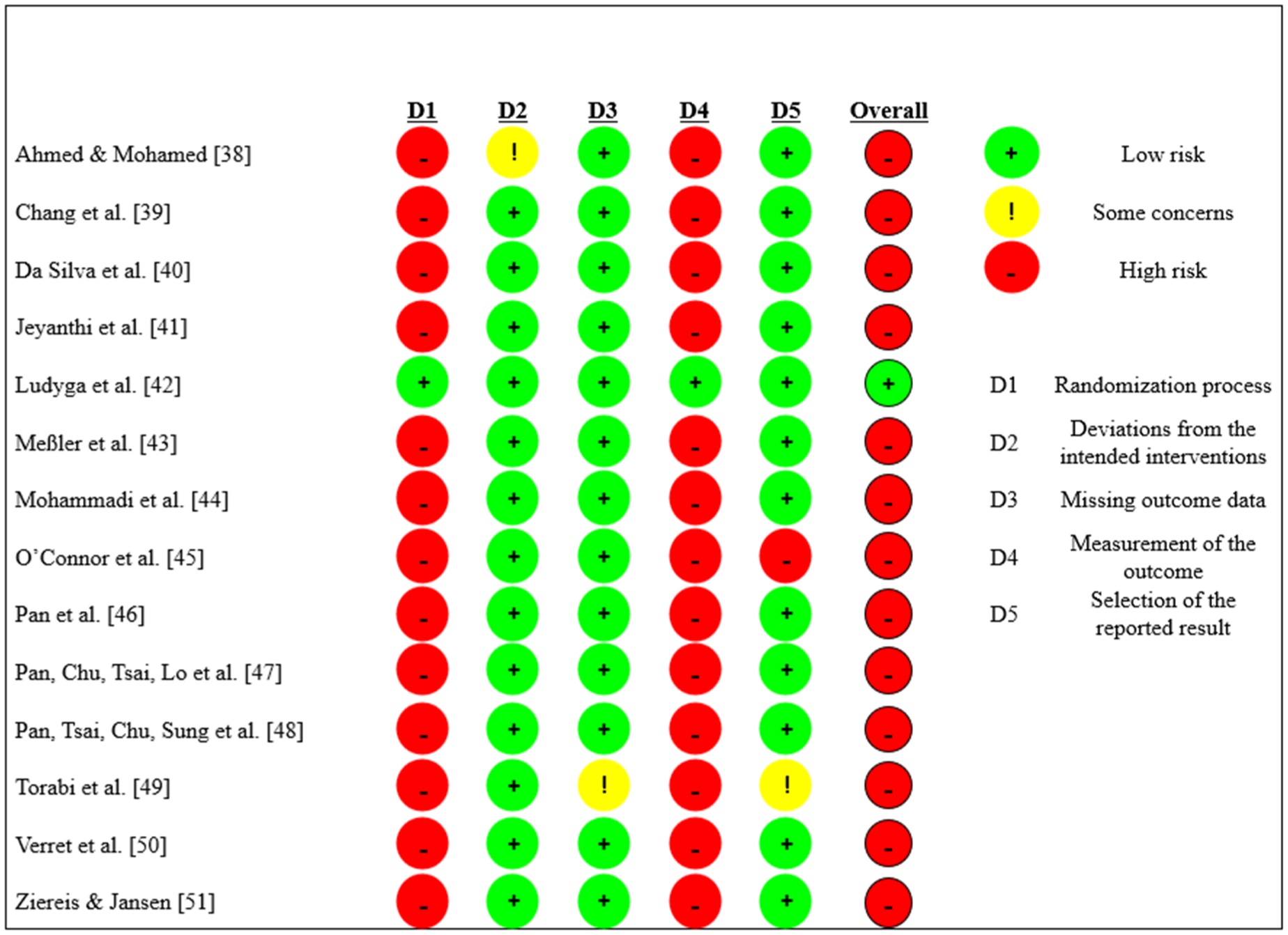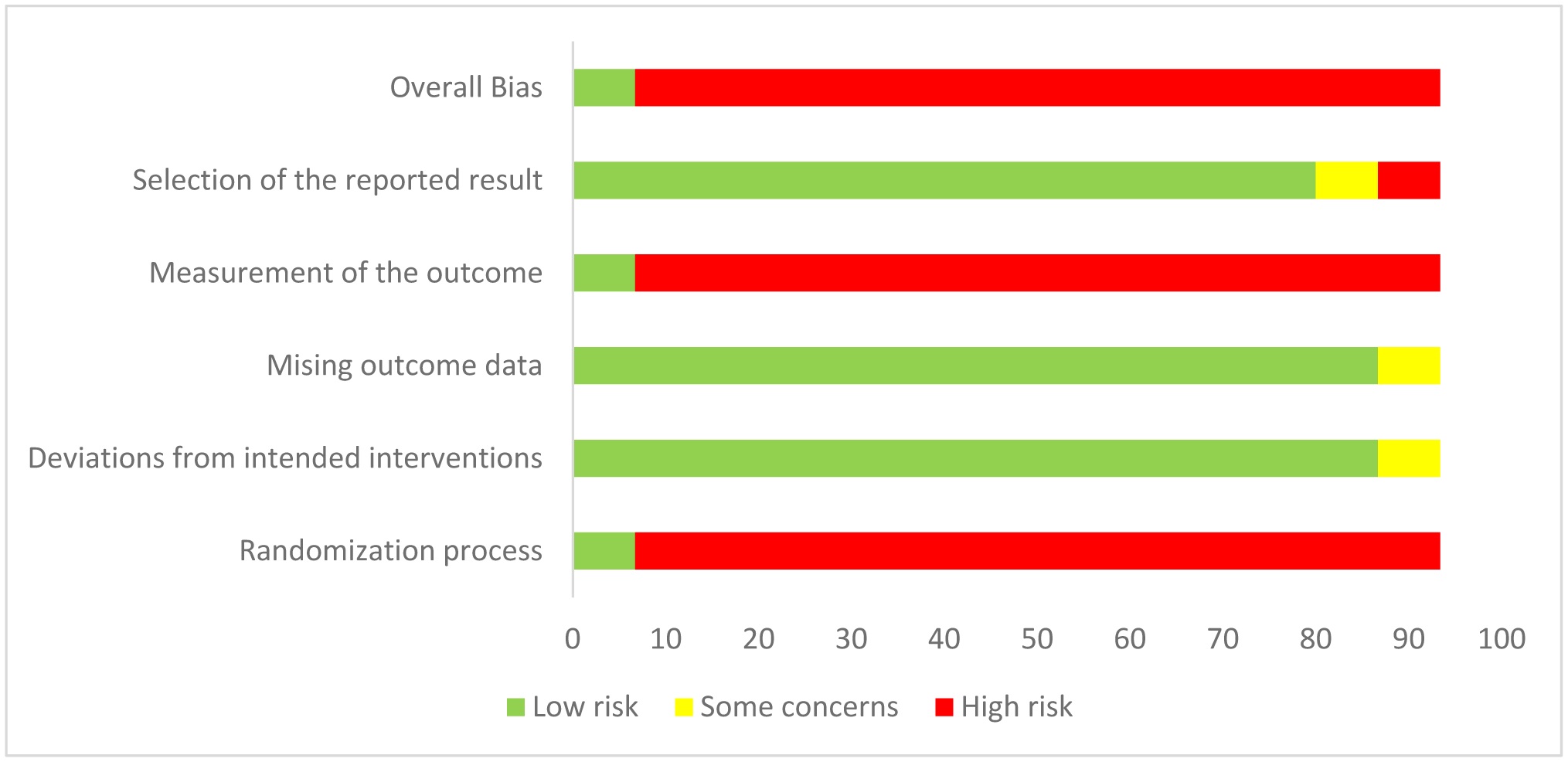1.
Introduction
Attention deficit hyperactivity disorder (ADHD) is a neurodevelopmental disorder manifested by inattention, impulsivity, and/or hyperactivity in children before the age of 12 years [1]. ADHD generates poor neurocognitive functioning expressed in a low attention span, working memory, and inhibitory control, among other limitations in executive functions [2],[3]. This neurodevelopmental disorder is more common in males than in females, and affects both developed and developing countries. In addition, 5.9% of young people and 2.8% of the world's adult population have this diagnosis [4].
Children and adolescents diagnosed with ADHD present antisocial behavior, a low academic performance, drug use, addictive behaviors, obesity, low self-esteem, and limited executive functions [5]. This generates difficulties to adapt to social norms and regulate their behavior, and produces problems at school, in the family, and with their peers, which can trigger emotional and behavioral disorders [4],[6]. In the case of adults, ADHD generates an emotional and executive function imbalance, in addition to other personality disorders, sleep disorders, among others [7].
Among the differences in the neural systems of those diagnosed with ADHD that are visible in the prefrontal cortex (PFC), cerebellum, and caudate nucleus are the slow maturation of the PFC or decreased activity or size of the PFC, cerebellum, or caudate, which are areas that are interconnected to each other through the neural network and regulate attention, behavior, thoughts, emotions, and actions. The maintenance of these areas is usually controlled by presynaptic and postsynaptic neurotransmitters, such as dopamine or norepinephrine [8]. The three areas named above oversee motor control [9]; due to a late maturation and lower activity, children and adolescents with ADHD may fall, tip over, or trip over things. In addition, those diagnosed with ADHD tend to have a greater motor impairment, thus potentially generating a comorbid disorder [10].
People diagnosed with ADHD present motor alterations; among them, we can find gait variability, such as step cadence, foot, or hip angle, as well as conditions that are accentuated during a faster gait or when performing a simultaneous task [11]. In relation to fine motor skills, they also have lower performances in tests that measure the accuracy and speed of short movements compared to children with neurotypical development [12]. On the other hand, the movement planning time tends to be longer in children with ADHD, in addition to not having consistency when performing small movements such as writing, which results in different shapes and sizes for the same letters [10]. As evidenced with those who possess motor difficulties, they also show problems in tasks that need a high coordination of fine motor movements [12]. It has been stated that 30% to 50% of those affected with ADHD have high motor coordination problems [13]. Thus, children and adolescents diagnosed with ADHD present poor motor coordination or motor performance, which presents as a daily obstacle in their interaction with the environment [14]. The persistence of motor problems in children with ADHD generates difficulties in their daily lives, alongside poor performances in games and sports [15], which becomes a conditioning factor in the child's school popularity and self-esteem [16].
These problems can cause serious difficulties in written communication, social interactions, and poor performances in physical/sports activities [12]. These problems can be still present by the adult age, including increased anxiety and depression, which reduces their capacity to carry out simple task in their home or workplace [17], which could be improved through the regular practice of a physical activity (PA), considering the particular characteristics of children and adolescents diagnosed with this disorder [18]. The benefits of PA on the individual are varied [19]; among them, we can highlight the reduction of premature deaths caused by non-communicable diseases [20], improvements in executive functions [21],[22], improvements in cognitive processes [23],[24], and improvements in the quality of life and well-being [25], among others. In addition, increased PA can produce motor and cognitive benefits during childhood and adolescence [26]. Additionally, it has been shown that exercise provides benefits for both mental and physical health, including relieving stress and preventing diseases such as being overweight, obesity, a decrease in the feeling of fatigue and tiredness, and an increase in self-esteem [27]. In relation to sports practice, it brings improvements to mental health [28], and in the case of children or adolescents with ADHD, group or individual physical-sports activities produce improvements in symptomatology [29] and in executive functions [30]. This research is centered in children and adolescents due to a faster adaptation to interventions compared to adults, thanks to a greater exercise induced neuronal plasticity [31] and the importance of intervening as soon as possible in the symptoms of ADHD. Thus, it is necessary to quantify the relationship between PA, exercise, sport, play or physical education, and the improvement of motor performance in children and adolescents with ADHD. Therefore, the aim of this systematic review is to analyze the effects of PA, sport, exercise, and play or physical education interventions on the motor performance of children and adolescents diagnosed with ADHD.
2.
Materials and methods
2.1. Search strategy for item identification
The present systematic review was registered in INPLASY (registration: INPLASY202370105) and was based on the Preferred Reporting Items for Systematic Reviews and Meta-Analyses (PRISMA) guideline [32]. For the article search, the following databases were used: PubMed (n = 87), SciELO (n = 0), WoS (n = 126), and Scopus (n = 133), giving a total of 346 papers, of which 14 met the inclusion criteria. For the identification of keywords, a research question was established through the Population, Intervention, Comparison, and Outcome (PICO) strategy [33],[34]. Subsequently, the following keywords and the use of the following Boolean operators were identified: “Children” OR “Adolescent” AND “ADHD” OR “attention-deficit/hyperactivity disorder” OR “attention deficit hyperactivity disorder” AND “Motor coordination” OR “Motor Performance” OR “Motor impairment” AND “Physical activity” OR “Exercise” OR “Sports” OR “Physical Education” OR “Play” OR “Pretend play”. The excluded 205 articles are as follows: Not within the Age range (n = 13), No TDAH participants (n = 27), No intervention (n = 134), Not English or Spanish (n = 6), Intervention not clear (n = 9), Different outcomes (n = 9), No human participants (n = 5), and Not available (n = 2) (Figure 1).
2.2. Selection criteria
Using keywords and their respective Boolean operators, and through the four databases, the search for information was performed on July 25, 2023. The search considered articles up to July 25, 2023. The inclusion criteria were as follows:
a. children and adolescents between 6 and 18 years;
b. PA or exercise or sport or physical education or play interventions;
c. articles published in English and Spanish;
d. randomized controlled trials (RCTs) or quasi-experimental clinical trials; and,
e. sought to improve some component of Motor Performance in Children or Adolescents with Attention Deficit Hyperactivity Disorder.
The exclusion criteria included the following:
1. review articles, letters from the editor, meta-analyses, and book chapters;
2. studies with a co intervention, such as medications and nutritional supplements; and,
3. case studies.
2.3. Data extraction and quality assessment
According to the selection criteria, all the researchers independently reviewed and selected the articles. In the case of differences, a third researcher acted as mediator for inclusion or exclusion, as appropriate.
The methodological quality was evaluated using the PEDro scale (Physiotherapy Evidence Database) [35]–[37]. This scale presents 10 criteria for the internal validity and presentation of the statistical analyses, and awards one quality point to the study if it meets the criteria described and zero points if it does not. The first criterion does not add up to a score. The classification was based on three criteria: selection (maximum three points), comparability (maximum three points), and results (maximum four points) (Table 1).
Additionally, the Cochrane Risk of Bias (RoB-2) tool for randomized clinical trials was used to assess the risk of bias in the included trials. The RoB has 5 domains (randomization process, deviations from the intended interventions, missing outcome data, outcome measurement, and selection of the reported outcome) and an overall rating; depending on the obtained results, the included articles can be rated as “low”, “some concerns”, or “high” risk of bias [52].
Details on the RoB in the included studies are shown in Figure 2a. The results of the analysis show that 13 of the 14 included studies had a high risk of selection bias and one was categorized as low risk. The high risk of bias is mainly due to the lack of information in domains D1 and D4 (randomization process and outcome measurement, respectively). Figure 2b shows the percentage obtained per trial for each item assessed (low risk, some concerns, high risk).
3.
Results
A total of 14 articles met the inclusion criteria. All selected articles were classified according to the type of intervention performed, and, in turn, each of the interventions was classified as stated by the authors. Of the selected articles, 9 performed exercise interventions [38],[39],[41],[43],[44],[46]–[49], 3 conducted sports interventions [40],[41],[45], and 2 reported interventions with PA programs [50],[51]. Although the articles were generally classified according to the physical intervention performed and stated by the author, there may be confusion, since the concepts of exercise, PA or sport in these studies may be used or understood as synonyms; therefore, this is an important aspect to be reviewed in future research.
4.
Discussion
The aim of the present research was to analyze the effects of PA, sport, exercise, play or physical education interventions on the motor performance of children and adolescents diagnosed with ADHD. Although not all the articles in their objective stated the evaluation of motor competence, in their results, they did report significant improvements in motor skills, together with the variables of their respective research.
Regarding exercise interventions, these were heterogeneous: we found aerobic exercise interventions [38], an intervention with water exercise, aerobic exercise, and coordination [39], a structured school exercise program [41], a multimodal therapy and High-Intensity Interval Training (HIIT) intervention [43], an exercise and music intervention [44], an intervention with table tennis exercises [46], a second intervention with table tennis exercises [48], a second research that applied HIIT [49], and a second study that applied HIIT [49] to as the motor and physical performances. The results found in this review are in line with those found by other authors, where exercise generates an increase in the motor skills test scores.
Han et al. [53] concluded that exercise interventions improved the gross motor skills, physical abilities, and motor coordination in children; however, these results are in children with obesity and normal weight, not in children with ADHD. Nevertheless, they had some similarities in the interventions they used, namely in duration, in the way of evaluating the motor performance and in the improvement. Therefore, it suggests that regardless of the condition, the implementation of this type of intervention will be beneficial in the motor performance, especially in children with ADHD, since they have lower levels of motor performance [54]. Even the development of physical education classes in children is related to a lower level of ADHD symptoms [55].
As for sports interventions, we found several proposals developed by researchers, which consisted of learning programs in swimming [40], judo [42], sports instruction in team games [45], and table tennis [47]. All research reported significant effects on motor competence and on other variables such as cognitive health, executive function, cognitive performance, and social functioning. The results found in sports interventions are similar to the results reported in two reviews: the first reported significant benefits in motor coordination, executive function, cognitive function, academic performance, behavior, and social skills [56]; and the second review reported benefits in ADHD symptomatology [29]. On the other hand, regarding the adult ADHD population, results have been evidenced with improvements in inattention and hyperactivity symptomatology in those who have participated in a vigorous swimming intervention [17], as well as improvements in executive function for those who participates in acute exercise-based interventions [57].
Finally, within the interventions developed through PA, one of them had a moderate to high intensity, but combined several activities for the achievement of intensity [50], and the second research developed a PA program that combined individual and group activities [51]. Both interventions reported improvements in motor competence and in variables such as physical fitness, behavior, cognitive functions, and executive functions. These results are similar to those reported by Carriedo [19], where he mentions that, regardless of the type of PA or its manifestation, it brings positive behavioral, neurocognitive, physical, and motor benefits in children with ADHD. Finally, the regular practice of PA in children and adolescents produces favorable results in health, well-being, physical, psychological, social, postural, motivational, and motor coordination, among others [58].
4.1. Strengths
This review allowed us to explore different types of interventions subcategorized in exercise, sport, and PA in children and adolescents diagnosed with ADHD. Although all the research reported significant results in motor competence, positive effects were also reported in other variables that are transferable to the daily lives of those who participated.
4.2. Limitations
This review has some limitations, among which the following can be identified: all interventions in terms of duration, type of intervention, session duration, sample confirmation, and research designs and objectives were heterogeneous, which limits the identification of which type of intervention is the most appropriate over the others. Another limitation was that a gray literature search was not performed because other types of programs were not identified, possibly due to the search strategies used. Moreover, a meta-analysis was not performed, which could perhaps have allowed for a better quantification and comparison of the results. Another important point is that due to the high risk of bias in the studies included in the review according to the RoB tool, the results should be viewed with caution, and future research protocols should be improved, especially in terms of randomization and blinding. Finally, the level of ADHD of the participants was not considered, nor was the diagnostic method examined in detail. This is a very important point to consider in future research, as it could help distinguish which intervention might be most effective, depending on the type of ADHD.
4.3. Future lines of research
In future research, it would be ideal to present the results by type of ADHD and conduct a meta-analysis to precisely explain which intervention is the most effective.
Furthermore, it would be very interesting to look for interventions with more heterogeneous samples. Although this disorder is prevalent worldwide in men, it could be useful to examine whether the effects are as similar in men as in women.
Additionally, examining the beneficial effect of intensity can be a very important point when recommending exercise interventions.
Finally, we encourage you to review the benefits of HIIT, as it remains an understudied tool, but is very interesting due to the short time required to perform it.
4.4. Practical implications
Although the interventions have different duration times per session, it is suggested that the beneficial results can be from short bouts of exercise, such as HIIT or 20-meter sprints, or larger training sessions. Shorter sessions can improve motor skills; however, larger training sessions improve the executive functions, attention, and/or positive behaviors. This could help select the adequate intervention according to the child's needs; therefore, it is possible to carry out extracurricular or complementary interventions to the physical education class in schools and/or kindergartens to promote improvements in the motor skills of children and adolescents with ADHD.
5.
Conclusions
This systematic review showed the positive effects of physical activity, sports, exercise in motor performance in children and adolescents with ADHD. No interventions of play or physical education programs were found, though some of the programs were performed in a school context. In addition, positive results were evidenced in variables such as cognitive functions, executive functions, and the academic and social performances of children and adolescents with ADHD.
Author contributions
Conceptualization and methodology: Antonio Castillo-Paredes; formal analysis: Nathacha Garcés, Angel Jara, Felipe Montalva-Valenzuela; investigation, Nathacha Garcés, Angel Jara, Felipe Montalva-Valenzuela; writing—original draft preparation: Nathacha Garcés, Angel Jara, Felipe Montalva-Valenzuela, Claudio Farías-Valenzuela, Gerson Ferrari, Paloma Ferrero-Hernández; writing—review and editing: Nathacha Garcés, Angel Jara, Felipe Montalva-Valenzuela, Claudio Farías-Valenzuela, Gerson Ferrari, Paloma Ferrero-Hernández and Antonio Castillo-Paredes; supervision: Gerson Ferrari and Antonio Castillo-Paredes. All authors have read and agreed to the published version of the manuscript.
Use of AI tools declaration
The authors declare they have not used Artificial Intelligence (AI) tools in the creation of this article.










 DownLoad:
DownLoad:





